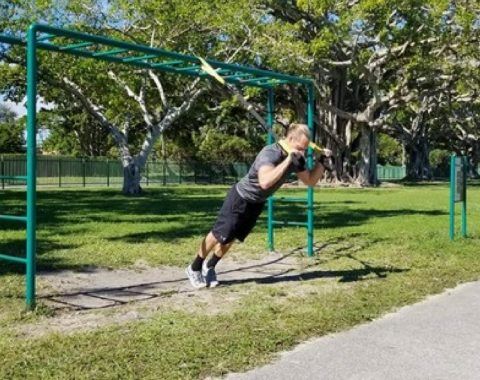Calisthenics, also known as bodyweight training, has gained significant popularity in recent years as an effective and efficient way to build strength, flexibility, and overall fitness. By using one's own body weight as resistance, calisthenics allows individuals to achieve remarkable results with minimal equipment. This ultimate guide will provide you with everything you need to know to master the art of calisthenics.
The Benefits of Calisthenics
Before delving into the specifics of calisthenics training, it is important to understand the numerous benefits it offers.
1. Strength Building: Calisthenics requires the engagement of multiple muscle groups simultaneously, leading to overall strength gains.
2. Flexibility and Mobility: Many calisthenics exercises emphasize full range of motion, improving flexibility and mobility.
3. Minimal Equipment: Unlike traditional gym workouts, calisthenics can be performed with little to no equipment, making it accessible to everyone.
4. Improved Body Control: Calisthenics trains your body to move synergistically, enhancing coordination and body control.
5. Increased Endurance: Bodyweight exercises challenge your cardiovascular system, increasing your endurance over time.
Getting Started with Calisthenics
Now that we understand the benefits of calisthenics, let's explore how to get started.
1. Determine Your Goals
Identify what you want to achieve through calisthenics. Whether it's building strength, gaining flexibility, or losing weight, defining your goals will guide your training plan.
2. Assess Your Current Fitness Level
Before diving into intense calisthenics routines, evaluate your current fitness level. This will help you choose appropriate exercises and avoid injury.
3. Warm-Up and Stretch
Always warm up your body and stretch before starting any exercise routine. This prepares your muscles and reduces the risk of injury.
4. Learn Proper Form
Execute each exercise with correct form to optimize results and minimize the chance of injury. Seek guidance from qualified trainers or online resources.
5. Start with Progressions
Calisthenics often involves mastering progressions of exercises. Begin with simpler variations and gradually progress towards more challenging ones as your strength and skills improve.
Must-Try Calisthenics Exercises
Now, let's explore some fundamental calisthenics exercises that should be a part of every beginner's training routine:
1. Push-Ups
The push-up is a classic exercise targeting the chest, shoulders, triceps, and core. Start with knees on the ground if needed and gradually progress to full push-ups.
2. Squats
Squats are excellent for developing leg strength. Keep your feet shoulder-width apart, and sit back as if lowering yourself onto a chair.
3. Plank
Planks strengthen your core and improve stability. Keep your body in a straight line, supported by your forearms and toes, for as long as possible.
4. Pull-Ups
Pull-ups target the back, biceps, and shoulders. Start with assisted pull-ups or use resistance bands if you are unable to perform a full pull-up yet.
5. Dips
Dips work your triceps, shoulders, and chest. Use parallel bars, a sturdy chair, or even your kitchen counter to perform dips.
Creating a Calisthenics Training Plan
A well-designed training plan ensures progress and prevents plateauing. Here are some key steps to create an effective calisthenics routine:
1. Determine Training Frequency
Decide how many days per week you can commit to calisthenics. Aim for at least three sessions to allow for recovery and consistent progress.
2. Divide Workouts
Divide your routine into upper body, lower body, and core workouts. This allows you to target specific muscle groups while giving other areas time to recover.
3. Plan Progressions
Progressions are key to continuous growth. Map out your progression plan for each exercise, gradually increasing difficulty over time.
4. Incorporate Rest Days
Rest is vital for muscle recovery and growth. Schedule rest days between intense workout sessions to prevent overtraining.
5. Track Your Progress
Keep a record of your workouts, noting repetitions, sets, and progressions. This helps you monitor your improvements and make adjustments as necessary.
Maintaining Motivation
Staying motivated is crucial for long-term success in calisthenics. Here are some tips to keep your motivation levels high:
1. Set Short-Term and Long-Term Goals
Break down your main goal into smaller, achievable milestones. Celebrate each milestone to stay motivated on your journey.
2. Find a Training Partner or Community
Training with someone who shares your passion can boost motivation and accountability. Join local calisthenics groups or online communities to connect with like-minded individuals.
3. Mix Up Your Routine
Variety prevents boredom and keeps your workouts exciting. Incorporate new exercises, progressions, or even try different workout locations to keep things fresh.
4. Track and Celebrate Progress
Seeing tangible improvements in your strength, endurance, or flexibility is highly motivating. Celebrate your milestones and reward yourself for your hard work.
5. Visualize Success
Imagine yourself achieving your goals and visualize the positive impact calisthenics will have on your life. This mental practice can enhance your motivation.
Final Thoughts
Calisthenics is a versatile and effective training method that can transform your fitness journey. Mastering the art of calisthenics requires patience, consistency, and proper form. With this ultimate guide, you are now equipped with the knowledge to embark on an exciting calisthenics journey and achieve your fitness goals.



